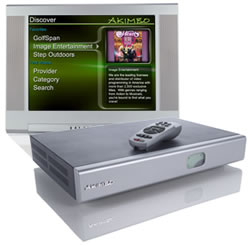At the IBM sponsored Wi-Fi Business Development Summit in Paris, consultancy BroadGroup has warned providers to pull back from complex pricing systems for Wi-Fi services, while it also warned major industry players to increase marketing emphasis on monthly subscriptions.
In simpler language – more transparency is needed. The more schemes and user choice on offer, the more complex pricing structures become it would seem, and BroadGroup define the current schemes as being ‘too finely segmented’. Using source material based on two recent European surveys of 122 Wi-Fi service providers and 83 GPRS operators, BroadGroup said that the findings suggested Wi-Fi is trending towards tariff structures that would leave users unable to comprehend what they were being charged. Whether this is the intent of the WiFi operators isn’t clear.
But what alternative is there for WiFi service providers if differentiating offerings is the only way to drive marketing strategies, the current mix leaving users with 365 tariff schemes across 28 countries – one for each day of the year.
It’s true, when you are bamboozled with too many price-saving schemes and special offers you end up being so confused that you just opt for the one you understand the best, and not the one that necessarily cuts your bill. And this is borne out by the fact that BroadGroup provided examples showing that if users did not know how many MB they consumed each month, they could be penalised by selecting an inappropriate tariff.
Furthermore, most Web sites did not provide an interpretation of MB usage anyway. Even if they all did, you’d wonder how many customers would actually have enough time to study them in detail. BroadGroup is currently conducting a study of business travellers in Europe to provide insight into data usage and what users understand as mobile data.
BroadGroup research also found that average pricing in the most popular timebands – 1 hour, 24-hours and 1 month had remained largely unchanged over the last 18 months. 24 hour pricing is now offered by 58% of all service providers in Europe with an average price of €15.08. However in a market where prepaid methodologies now dominated, the consultancy believed there was a need to concentrate on the promotion of monthly subscriptions to sustain business growth.
The consultancy also noted that European Wi-Fi prices continued to be more expensive than the US and Asia.
 We’ve been keeping our eye on Akimbo, an IP-delivered VOD (Video-On-Demand) service and have learnt that they are launching and have signed on Amazon.com as its official retailer. Akimbo has just launched its video-on-demand service and signed on Amazon.com as its official retailer. Akimbo is to video what Apple’s iTunes is to the iPod. The Akimbo Player, utilising an easy “Queue and View” format is a set-top box that delivers hundreds of mainly niche program videos to television through a broadband-Internet connection allowing consumers to choose content and view it on-demand – or maybe even later.
We’ve been keeping our eye on Akimbo, an IP-delivered VOD (Video-On-Demand) service and have learnt that they are launching and have signed on Amazon.com as its official retailer. Akimbo has just launched its video-on-demand service and signed on Amazon.com as its official retailer. Akimbo is to video what Apple’s iTunes is to the iPod. The Akimbo Player, utilising an easy “Queue and View” format is a set-top box that delivers hundreds of mainly niche program videos to television through a broadband-Internet connection allowing consumers to choose content and view it on-demand – or maybe even later.